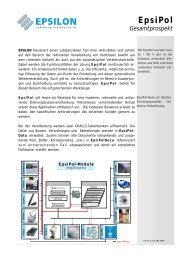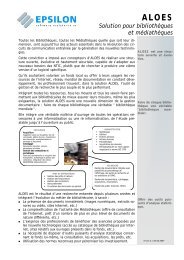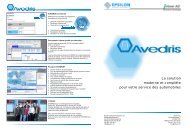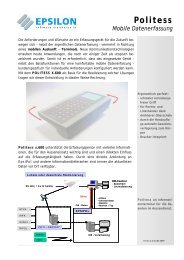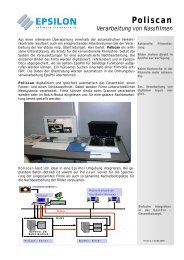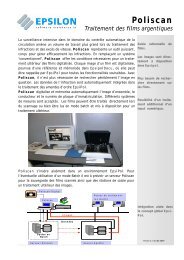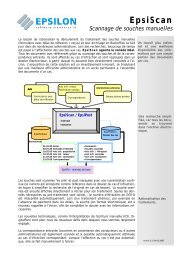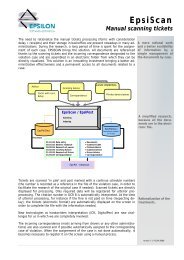F-Secure Policy Manager
F-Secure Policy Manager
F-Secure Policy Manager
You also want an ePaper? Increase the reach of your titles
YUMPU automatically turns print PDFs into web optimized ePapers that Google loves.
Clear<br />
The Clear button clears the current value, after which the field will either display the inherited value (grey<br />
text), or no value at all. Clear is available only if there is a value defined for the currently selected domain or<br />
host.<br />
Force value<br />
Force value is available only when a policy domain is selected. You can enforce the current domain setting<br />
to also be active in all subdomains and hosts. In practice, this operation clears the corresponding setting in<br />
all subdomains and hosts below the current domain, enabling the inheritance of the current value to all<br />
subdomains and hosts. Use this cautiously: all values defined in the subdomain or hosts under the selected<br />
domain are discarded, and cannot be restored.<br />
Show domain values<br />
Show domain values is available only when a policy domain is selected. You can view a list of all policy<br />
domains and hosts below the selected policy domain, together with the value of the selected field.<br />
Click any domain or host name to quickly select the domain or host. It is possible to open more than one<br />
Domain value dialog simultaneously.<br />
Viewing the status<br />
You can view the settings and statistics of a policy domain in the main application area.<br />
To view the status:<br />
1. Open the Status tab.<br />
F-<strong>Secure</strong> <strong>Policy</strong> <strong>Manager</strong> | Using <strong>Policy</strong> <strong>Manager</strong> Console | 25<br />
2. Select the product.<br />
<strong>Policy</strong> <strong>Manager</strong> Console will render a product view for the selected product, where you can view the more<br />
important local settings and statistics.<br />
Note: Values cannot be edited, but the MIB help texts can be displayed by clicking a field or its<br />
label.<br />
For the policy domains, the Status tab will show the domain level status overview: number of hosts in the<br />
domain, and list of disconnected hosts.<br />
3. Click any disconnected host to quickly change the policy domain selection into that host.<br />
This way it is possible to investigate if the disconnected host managed to send some alerts or useful<br />
statistics before the disconnection. This information may help to investigate why the host was disconnected.<br />
If the reason is clear, for example, if the host's F-<strong>Secure</strong> software has been uninstalled, the host can be<br />
deleted normally.<br />
4. After investigating one disconnected host, you can go back to the previously selected domain level by<br />
clicking the button in the toolbar.<br />
The Domain status view also offers two shortcut operations for handling a greater number of disconnected<br />
hosts: selecting all disconnected hosts and deleting all disconnected hosts. Both operations can be<br />
accessed through the Disconnected host tree root node context menu.<br />
Caution: Deleting all disconnected hosts is potentially a dangerous operation, as it is possible that<br />
some existing hosts are for some natural reason temporarily disconnected longer than the allotted<br />
threshold days. Always check the disconnection threshold value from Tools > Server configuration<br />
> Hosts before deleting hosts. If a still existing host is deleted accidently, all host specific alerts,<br />
report, status and policy settings will be lost. However, the host will send an autoregistration message<br />
once it discovers that it has been removed from <strong>Policy</strong> <strong>Manager</strong>. The host can be re-imported to the<br />
domain tree, but from the <strong>Policy</strong> <strong>Manager</strong> point of view it's like any other newly added host.



